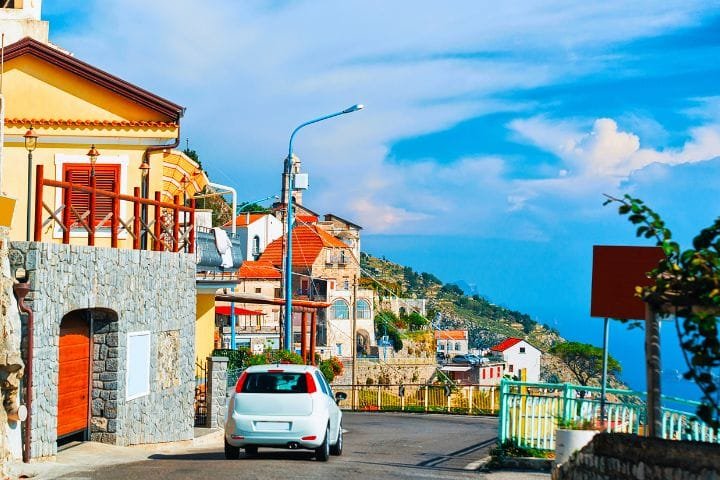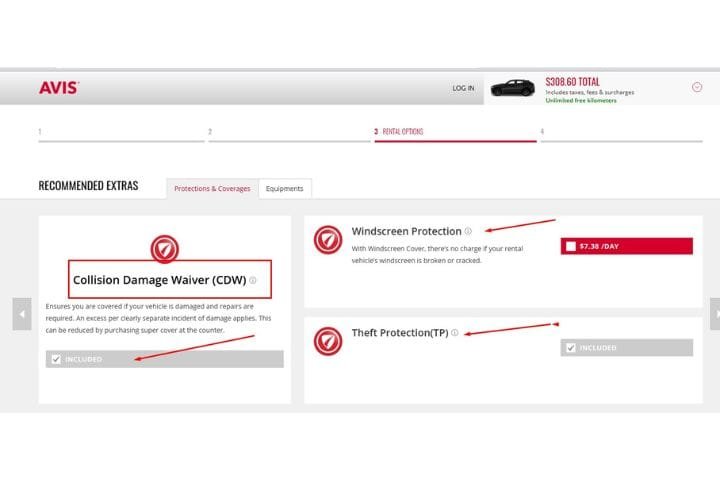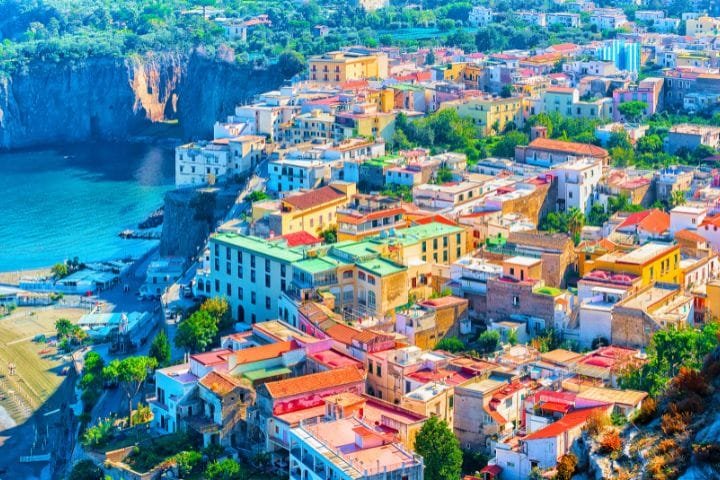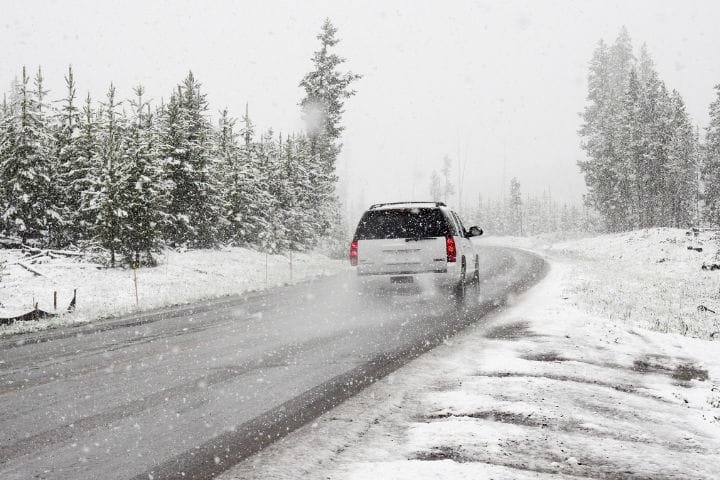Car Insurance Requirements in Italy: What Tourists Must Know (2025)

by Tim | Last Updated December 12, 2025

Planning to drive in Italy and confused about insurance requirements? Trust me, I get it! After spending extended periods in Italy over the past fifteen years, sometimes 3-4 months at a time, I have helped countless fellow Americans figure out Italian insurance requirements.
I can honestly say this is one of the most confusing aspects of driving in Italy. The system is completely different from what we’re used to back home, and getting it wrong can cost you big time.
Did you know that driving without proper insurance in Italy can result in fines up to €3,464, vehicle confiscation, and criminal charges? Whether you’re renting a car for a romantic Tuscany road trip or bringing your own vehicle from the US, understanding Italian insurance requirements is absolutely crucial.
From mandatory liability coverage to specific rental car insurance considerations that can save you thousands, this guide covers everything tourists need to know about staying legally protected on Italian roads.
Let’s decode the car insurance requirements in Italy so you can focus on enjoying those incredible driving routes!
I learned this the hard way during my first extended stay when I thought my US credit card coverage would be enough for everything. Spoiler alert: it wasn’t! Now I make sure every American friend planning a long Italian adventure understands exactly what they need before they even think about getting behind the wheel here.

Mandatory Car Insurance Requirements in Italy
Let me start with the basics – RCA (Responsabilità Civile Auto) is mandatory liability insurance that every vehicle on Italian roads must have. This isn’t optional, and the penalties for driving without it are absolutely brutal. We’re talking fines up to €3,464, immediate vehicle confiscation, and potential criminal charges.
The minimum coverage amounts are way higher than most US states require. You need at least €6.07 million for bodily injury and €1.22 million for property damage per incident. Compare that to Florida’s pathetic $10,000 minimum, and you’ll understand why Italian insurance seems expensive.
Carta Verde (Green Card) is your proof of insurance document that extends your coverage throughout Europe. If you’re driving a rental car, this should be included automatically. If you’re bringing your own vehicle, you’ll need to arrange this through your insurance company before traveling.
Here’s what most tourists don’t realize – Italian police can check your insurance status electronically. They don’t need to see physical documents anymore because everything’s in their computer system. But you should still carry proof just in case the system is down.
🛡️ Italy’s Mandatory Insurance Basics
Understanding RCA (liability) and minimum legal requirements.
- Start with the complete guide to Italy’s driving laws and expectations → Driving in Italy: Complete Guide
- Review the main documents tourists must carry while driving → International Driving Permit Italy Guide
Understanding Italian Liability Insurance (RCA)
Italian RCA coverage is comprehensive compared to basic US liability policies. During my longer stays, I’ve had to really dig into understanding this system, and it includes:
- Third-party bodily injury with minimum €6.07 million coverage
- Property damage liability starting at €1.22 million
- Legal defense coverage for court proceedings
- Administrative costs for claims handling
- EU-wide validity for cross-border travel
The big difference from US insurance is that Italian RCA follows the vehicle, not the driver. So if you’re driving someone else’s car in Italy, you’re covered under their policy. This is actually pretty convenient for long-term visitors who might borrow cars from Italian friends.
What surprised me most during my extended stays was that these aren’t maximum limits – they’re minimums. Most Italian policies actually provide much higher coverage because the legal system here really protects accident victims. Personal injury settlements can be massive compared to many US states.
Rental Car Insurance Requirements for Tourists
This is where American tourists get absolutely hammered if they don’t understand the system. During my months-long stays, I’ve rented cars multiple times and learned these lessons the expensive way. Rental cars come with basic RCA liability insurance included, but that’s just the beginning of what you actually need.

Basic CDW (Collision Damage Waiver) is usually included, but it comes with huge deductibles – typically €1,000-1,500. That means if you scratch the car on one of those narrow Amalfi Coast roads (and trust me, it happens), you’re paying big money out of pocket.
Super CDW reduces your deductible to zero or close to it, and costs about €15-25 per day extra. After helping friends deal with expensive damage claims during my stays here, I always tell tourists to get this. Italian streets are narrow, parking is tight, and even experienced drivers get scratches here.
Essential rental car coverage includes:
- Third-party liability (mandatory, usually included)
- Collision damage waiver with appropriate deductible reduction
- Theft and vandalism protection
- Personal accident insurance (if not covered by travel insurance)
- Legal expense coverage for serious accidents
The rental companies will try to sell you everything under the sun, but focus on comprehensive CDW and make sure you understand exactly what’s covered and what isn’t.
🚗 What Rental Car Insurance Covers
CDW, theft protection, excess coverage, glass/tire protection.
- Compare rental requirements & best practices → Best Car Rental Companies in Italy
- Know which documents are legally required at pickup → International Driving Permit Italy Guide
Credit Card Insurance Coverage in Italy

Here’s where I see American tourists make their biggest mistakes. Most US credit cards offer rental car insurance, but the coverage in Italy is often limited or completely excluded. During one of my extended stays, I watched a friend get stuck with thousands in damage costs because he relied on credit card coverage that didn’t actually apply.
Primary vs secondary coverage matters here. Secondary coverage only kicks in after your personal auto insurance, which doesn’t help if you don’t have international coverage. Primary coverage acts as your main insurance, but many cards don’t offer primary coverage in Italy.
Common credit card exclusions in Italy:
- Luxury or exotic vehicles (broadly defined)
- Trucks, vans, or vehicles over certain weight limits
- Off-road driving or unpaved roads
- Damage while violating traffic laws (including ZTL violations)
- Interior damage, missing items, or key replacement
Documentation requirements for credit card claims are extensive. You’ll need police reports, rental agreements, damage assessments, and receipts for everything. The process can take months, and you’re responsible for paying upfront and getting reimbursed later.
My advice? Use credit card insurance as backup only, not your primary coverage. The hassle and risk aren’t worth the savings, especially when rental company insurance handles everything on the spot.
💳 Does Your Credit Card Provide Enough Protection?
Many travelers misunderstand what they’re actually covered for.
- Review full rental-car rules and common pitfalls → How to Rent a Car in Italy Stress-Free
- Understand Italy’s toll system, where damage or penalties may apply → Italy Toll Roads & Telepass Explained
Additional Insurance Considerations for American Tourists

Travel insurance with rental car coverage is often overlooked but incredibly valuable for extended stays. Good travel insurance can cover medical expenses from car accidents, trip interruption due to vehicle problems, and sometimes even rental car damage that other policies exclude.
Medical coverage while driving abroad is crucial because your US health insurance probably doesn’t cover you in Italy. Italian healthcare is excellent, but emergency treatment for serious accident injuries can be expensive for uninsured foreigners.
Roadside assistance becomes essential when you’re driving in a foreign country where you don’t speak the language fluently. During my longer stays, I’ve had to use this service twice, and it’s worth every penny for peace of mind.
Legal expense insurance can be a lifesaver if you’re involved in a serious accident. Italian legal procedures are complex, and having coverage that provides English-speaking legal representation is invaluable for Americans spending months here.
Cross-border coverage matters if you’re planning to drive from Italy into France, Switzerland, or other countries. Some policies restrict cross-border travel or require additional fees and documentation.
Bringing Your Own Vehicle: Insurance Requirements

If you’re shipping your car to Italy for an extended stay or driving from another EU country, the insurance requirements get more complex. Your US auto insurance definitely won’t cover you here, so you need to arrange European coverage before arrival.
Green Card certification extends your insurance coverage throughout Europe. Contact your US insurance company well before traveling – this process can take weeks, and not all companies offer international coverage extensions.
Temporary importation allows you to drive your US-registered vehicle in Italy for up to one year, but you need proper insurance documentation and registration papers. The bureaucracy is intense, so start this process months in advance if you’re planning extended stays.
Registration requirements vary based on how long you’re staying. Tourist visits under 185 days use your US registration, but longer stays require Italian registration and insurance. The switch-over process is complicated and expensive.
Border crossing verification is where your documentation gets checked. Italian customs officers are thorough, and missing insurance documentation can result in your vehicle being impounded until you arrange proper coverage.

Plan Your Trip with Our Favorite Booking Tools
What Happens If You’re in an Accident
Italian accident procedures are very different from those in the US, and knowing what to do can save you massive headaches later. I’ve unfortunately witnessed several accidents and helped Americans navigate the process. The language barrier makes everything more complicated, so preparation is key.
Immediate steps for any accident:
- Call 112 (European emergency number) for police and medical assistance
- Don’t move vehicles unless they’re blocking traffic
- Take extensive photos of damage, road conditions, and license plates
- Exchange information using the standard CID (Constatazione Amichevole) form
- Get contact information from any witnesses
Police reports are mandatory for accidents with injuries, significant damage, or disputes about fault. Italian police are professional, but the process takes time and requires patience. Having someone translate can be helpful.
CID forms are standardized accident report forms used throughout Europe. Both drivers fill out the same form with details about the accident. Don’t sign anything you don’t understand, and don’t admit fault even if you think you may have caused the accident.
Insurance claims in Italy prioritize protecting accident victims, which means the process is thorough but slow. Keep detailed records of everything – medical expenses, vehicle damage, lost wages, and communication with insurance companies.
Time limits for reporting accidents are strict. Most policies require notification within 3 days, and some claims must be filed within specific timeframes. Missing these deadlines can void your coverage entirely.
Tips for Avoiding Insurance Gaps and Problems
After spending months at a time in Italy and helping dozens of Americans navigate Italian insurance issues, here are the mistakes I see most often and how to avoid them:
Verify coverage before departure by calling your insurance company, credit card issuer, and rental car company. Get everything in writing, including specific coverage amounts and exclusions for Italy.
Understand policy exclusions completely. Many policies exclude coverage for driving in restricted ZTL zones, on unpaved roads, or while under the influence. These exclusions can void your entire claim.
Essential documentation to carry:
- Insurance policy documents or certificates
- International Driving Permit and US license
- Passport and rental agreement
- Emergency contact numbers for insurance companies
- CID accident report forms (available from rental companies)
Emergency contacts should include your insurance company’s international claims number, rental car company assistance, and the US embassy in Italy. Store these in your phone and keep written copies in your vehicle.
Common mistakes that void coverage:
- Driving without proper licensing (IDP required)
- Allowing unlisted drivers to operate the vehicle
- Using the vehicle for commercial purposes
- Driving while impaired or violating major traffic laws
- Failing to report accidents within the required timeframes
Protecting Yourself on Italian Roads
Look, insurance in Italy isn’t just about meeting legal requirements – it’s about protecting yourself financially and legally in a foreign country where the rules are different and the language barrier is real.
During my extended stays here, I’ve learned that the costs might seem high compared to basic US coverage, but the protection is comprehensive.
My biggest piece of advice? Don’t try to save money by skimping on insurance coverage. The few extra euros per day for comprehensive protection are nothing compared to dealing with a major accident claim in a foreign legal system. I’ve seen American tourists face financial ruin because they thought basic coverage would be enough.
Get proper coverage, understand what you’re buying, carry all required documentation, and drive defensively. Italian roads are challenging, but with the right insurance protection, you can explore this incredible country with confidence and peace of mind.
The goal is to enjoy your Italian adventure, not spend it worrying about insurance claims and legal problems. Invest in proper coverage upfront, and you’ll be free to focus on the amazing experiences that driving in Italy offers. Trust me, those Tuscan sunset drives and Amalfi Coast cruises are worth every euro you spend on proper insurance protection!
🏁 Final Guide to Staying Safe & Fully Covered
Confidence comes from understanding laws, signs, rules, and seasonal changes.
- Review Italy’s complete driving rulebook → Driving in Italy: Master Guide
- Use apps that help you avoid zones and fines → Best Navigation Apps for Italy
- Review speed limits and enforcement to stay compliant → Speed Limits in Italy for Tourists
- Learn safety signage, tunnel restrictions, and warning signals → Italian Road Signs Explained
- Learn how speed limit breaches or ZTL violations may impact claims → Italy ZTL Zones Guide
- Learn safety signage, tunnel restrictions, and warning signals → Italian Road Signs Explained
- Avoid the most common ZTL-related fines Americans face → How to Avoid ZTL Zones in Italy
FAQs on Car Insurance Requirements in Italy
What insurance is legally required to drive in Italy?
RCA (Responsabilità Civile Auto) liability insurance is mandatory for all vehicles in Italy. Minimum coverage requires €6.07 million for bodily injury and €1.22 million for property damage, much higher than most US state minimums.
This coverage must be valid throughout the EU with a Green Card certificate. Driving without proper insurance results in fines up to €3,464, vehicle confiscation, and potential criminal charges.
For rental cars, basic RCA is included, but you’ll need additional collision coverage to protect against damage costs with typical deductibles of €1,000-1,500.
Is my US credit card rental insurance sufficient in Italy?
Unfortunately, most US credit card rental insurance has significant limitations in Italy. Many cards exclude Italy coverage entirely or only provide secondary coverage that kicks in after your personal auto insurance.
Common exclusions include luxury vehicles, ZTL traffic violations, off-road driving, and interior damage. Even when coverage applies, you must pay upfront and wait months for reimbursement while providing extensive documentation, including police reports.
I recommend using credit card insurance only as a backup and purchasing comprehensive rental company insurance for primary protection.
What rental car insurance should I actually buy in Italy?
Always get Super CDW (Collision Damage Waiver) that reduces your deductible to zero – standard CDW has €1,000-1,500 deductibles that make you liable for expensive damage on narrow Italian roads.
Essential coverage includes third-party liability (usually included), comprehensive collision protection, theft and vandalism coverage, and personal accident insurance if not covered by travel insurance.
Budget €15-25 extra per day for Super CDW. Skip unnecessary add-ons like GPS rental (use your phone), but don’t skimp on damage protection – Italian streets are challenging even for experienced drivers.
Do I need additional travel insurance for driving in Italy?
Yes, comprehensive travel insurance with rental car coverage is highly recommended for extended stays. Your US health insurance likely doesn’t cover you in Italy, and accident-related medical costs can be substantial. Good travel insurance covers medical expenses, trip interruption due to vehicle problems, legal expenses for serious accidents, and sometimes rental car damage, which is excluded by other policies.
This is especially important for Americans spending months in Italy, as the language barrier and legal system differences make professional assistance invaluable during emergencies.
What happens if I have an accident in Italy?
Call 112 immediately for police and medical assistance. Take extensive photos of damage, vehicles, and road conditions. Exchange information using the standard CID (Constatazione Amichevole) form – don’t sign anything you don’t understand or admit fault.
Police reports are mandatory for accidents with injuries or significant damage. Notify your insurance company within 3 days (strict requirement).
Keep detailed records of all expenses and communications. Italian claims processes prioritize victim protection and can be slow, so patience and thorough documentation are essential. Having English-speaking legal assistance through your insurance is invaluable.
💬 We’d love to hear from you!
Have questions, tips, or personal travel stories to share? Drop them in the comments below — your insights help fellow travelers plan their adventures too.













